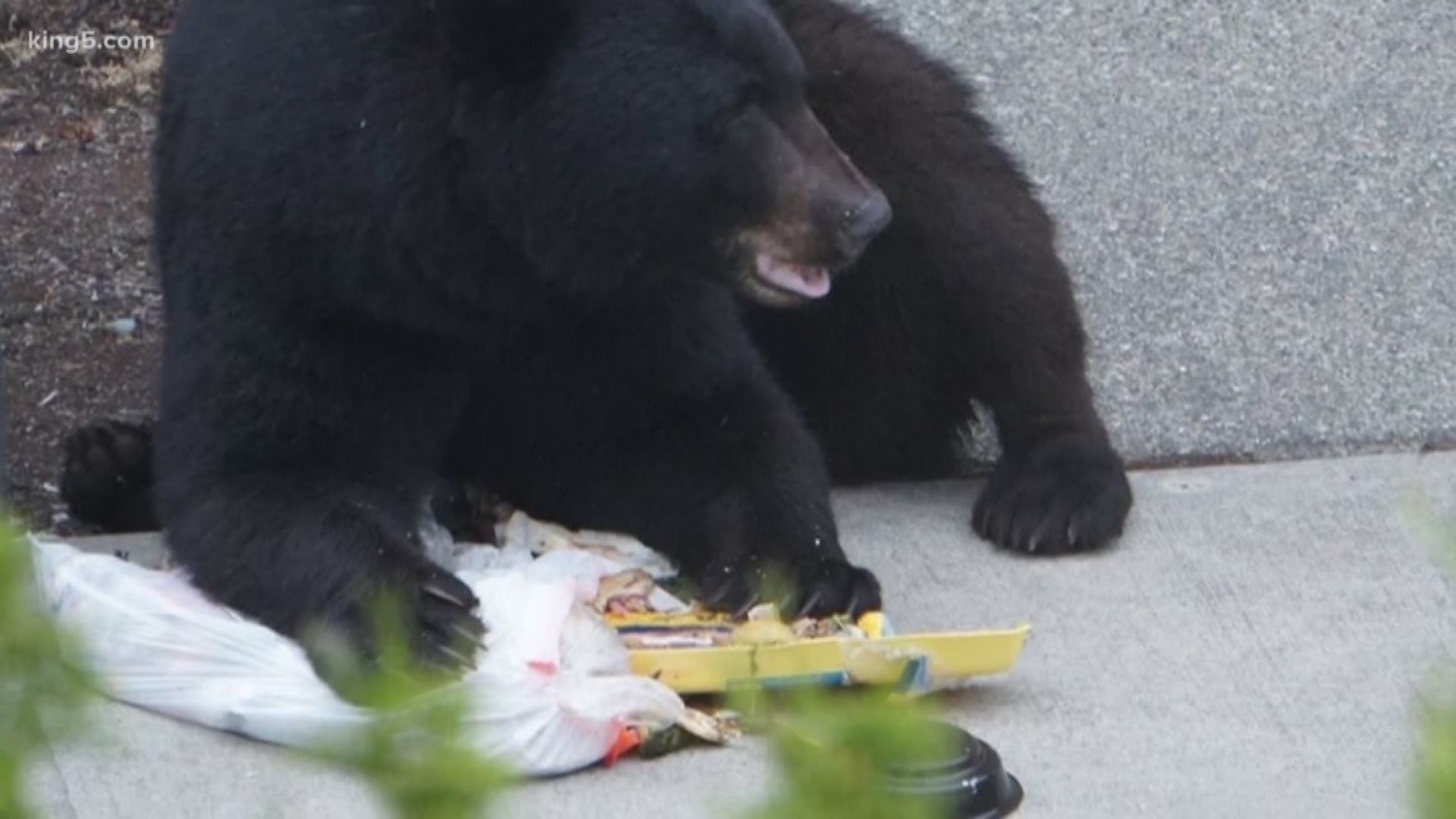DUVALL, Wash. — A black bear got a lot of attention earlier this week when he was caught running around Bellevue’s Factoria neighborhood. It's a busy season for bears as they look for food and mates.
The man who is taking a lot of calls about bear sightings around King County right now is Washington Department of Fish and Wildlife Sgt. Kim Chandler.
“These were sightings as they came in over just a period two days," Sgt. Chandler said as he pointed to his computer. "There’s a bear came from Woodinville, crossed I-405, went through Kirkland up on Fin Hill, and was eventually put in a tree."
All kind of factors impact bear activity, Sgt. Chandler said, from weather to food abundance.
There’s one thing that increases bear problems more than anything else. But it’s not really a bear problem. It’s a problem with humans.
“Trust me these bears know when garbage day is. They don’t have an issue until garbage day,” Sgt. Chandler explained.
Garbage and leftover food are the number one reason bears are euthanized in western Washington.
Bears can smell our trash from 20 miles away.
As more people move to the Puget Sound region, they bring more trash, often to areas where urban sprawl is inching closer to wildlife. Bear sightings increase on days when trash containers are out for pickup.
“It’s just a hop, skip, and a jump where those bears live,” Sgt. Chandler said.
King County is on track this year to surpass the number of bear incidents in 2018, according to Washington state data. Last year, there were 164 reported incidents with black bears. So far this year, the county has already hit 104.
However, bear activity varies from year to year and often one bear is seen several times.
In 2015, there were 184 reported incidents. On dryer years, the natural food sources for bears can be scarcer and trash offers a much quicker high-calorie snack.
“Is this 300-some bears in King County? No. This is probably a total of maybe 20 bears,” Sgt. Chandler said, pointing to a map on his computer.
Bear attacks are extremely rare, according to Sgt. Chandler, who said you're far more likely to be hurt by a neighborhood dog. The best way to keep everyone safe, Sgt. Chandler said, is to secure our trash and assume bears are often watching us even if we can’t see them.

